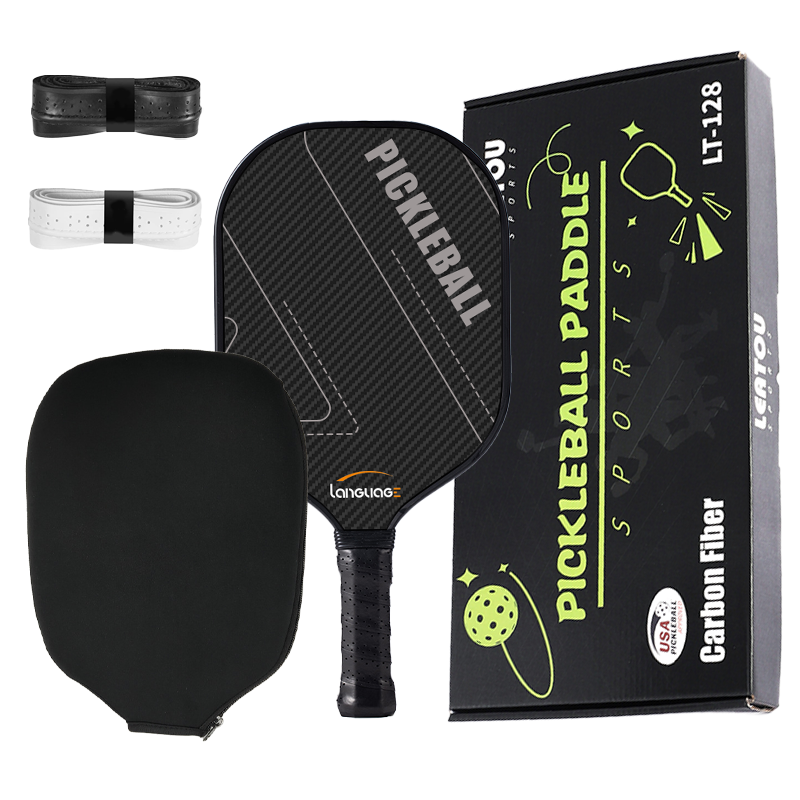
# Carbon Fiber Pickleball Paddle: Lightweight and Durable Performance
## Introduction
Pickleball has rapidly grown in popularity, and players are constantly seeking equipment that enhances their performance. One of the most sought-after innovations in the sport is the carbon fiber pickleball paddle. Combining lightweight design with exceptional durability, these paddles are revolutionizing the game. In this article, we’ll explore why carbon fiber paddles are a top choice for players of all skill levels.
## Why Choose a Carbon Fiber Pickleball Paddle?
### Lightweight Design
One of the standout features of a carbon fiber pickleball paddle is its lightweight nature. Carbon fiber is significantly lighter than traditional materials like wood or aluminum, allowing players to swing faster and react more quickly during intense rallies. This weight advantage can make a noticeable difference in both offensive and defensive plays.
### Exceptional Durability
Carbon fiber is renowned for its strength and resilience. Unlike paddles made from other materials, carbon fiber paddles resist dents, cracks, and wear over time. This durability ensures that your paddle maintains its performance characteristics even after months of rigorous use.
### Enhanced Control and Power
The stiffness of carbon fiber provides a unique blend of control and power. Players can achieve precise shots while still delivering powerful smashes when needed. The material’s responsiveness also improves touch shots, making it easier to execute dinks and drops with accuracy.
## Comparing Carbon Fiber to Other Materials
### Carbon Fiber vs. Graphite
While graphite paddles are also lightweight, carbon fiber offers superior durability and stiffness. Graphite may flex more, which can reduce power transfer, whereas carbon fiber maintains its rigidity for consistent performance.
### Carbon Fiber vs. Composite
Composite paddles often combine materials like fiberglass and polymer, but they may lack the same level of responsiveness as carbon fiber. Carbon fiber paddles provide a more direct feel, allowing for better shot feedback.
### Carbon Fiber vs. Wood
Wooden paddles are heavier and less durable compared to carbon fiber. The added weight can slow down swings, making carbon fiber the clear choice for players looking to improve their speed and agility on the court.
## Top Features to Look for in a Carbon Fiber Paddle
### Core Material
Most carbon fiber paddles feature a polymer or Nomex core. Polymer cores offer a softer feel and better control, while Nomex cores provide a firmer response and increased power.
### Edge Guard
A robust edge guard protects the paddle from accidental impacts and extends its lifespan. Look for paddles with reinforced edges to ensure long-term durability.
### Grip Comfort
A comfortable grip is essential for prolonged play. Paddles with cushioned or perforated grips can reduce fatigue and improve handling during matches.
## Maintenance Tips for Your Carbon Fiber Paddle
### Regular Cleaning
Wipe down your paddle after each use to remove sweat and dirt. A damp cloth is usually sufficient, but avoid harsh chemicals that could damage the surface.
### Proper Storage
Store your paddle in a protective case or cover to prevent scratches and exposure to extreme temperatures. Avoid leaving it in direct sunlight or humid environments.
### Inspect for Damage
Periodically check your paddle for signs of wear, such as cracks or loose edges. Addressing minor issues early can prevent more significant damage later.
## Conclusion
Keyword: carbon fiber pickleball paddle
The carbon fiber pickleball paddle is a game-changer for players seeking a lightweight, durable, and high-performance option. Its superior construction and material benefits make it a standout choice in the competitive world of pickleball. Whether you’re a beginner or a seasoned pro, investing in a carbon fiber paddle can elevate your game to new heights.
Recent Comments